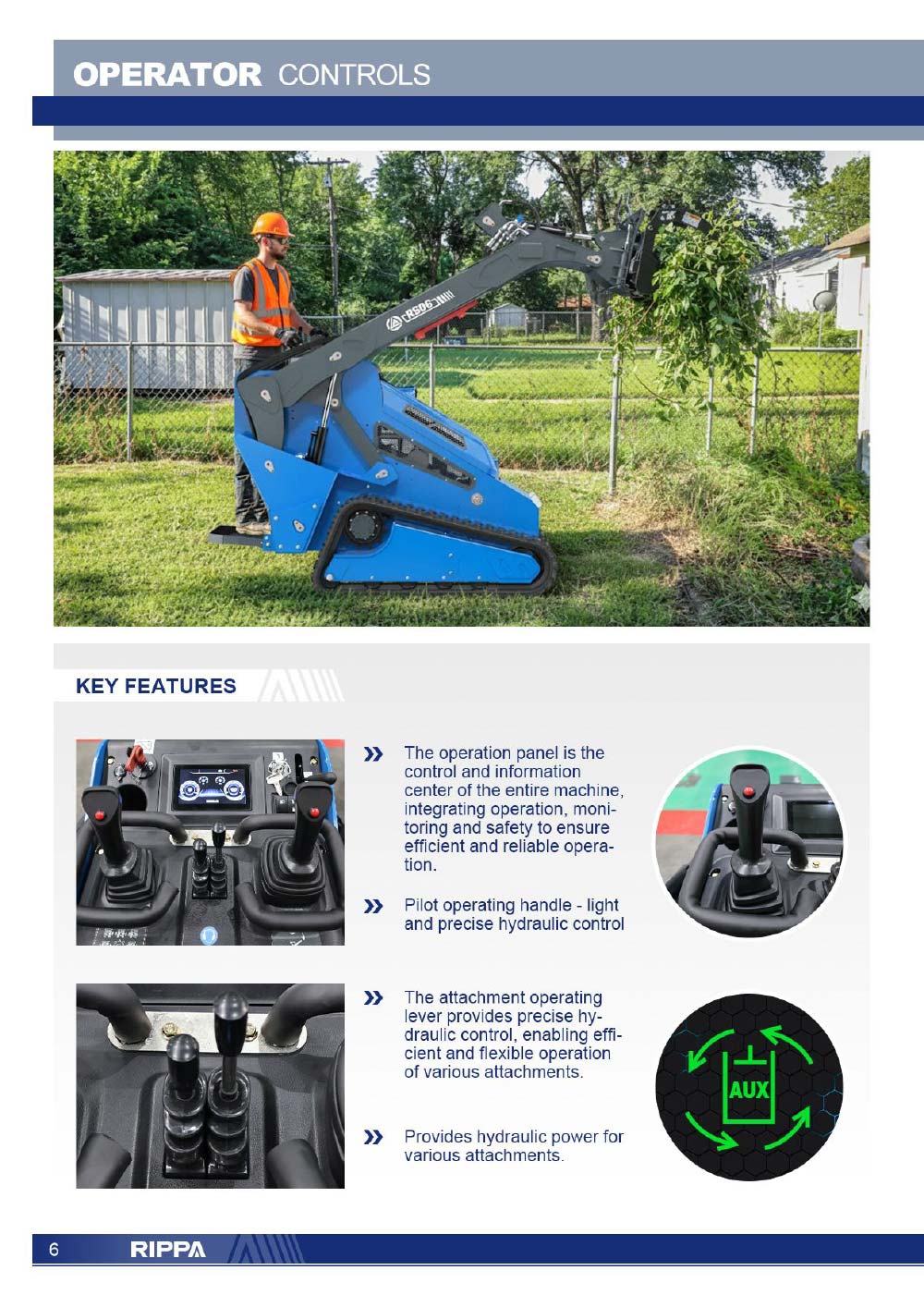Things You Can Do With a Skid Steer – Skid Steer Applications
What is a Skid Steer Loader?
A skid steer loader is a compact construction vehicle designed for versatility and efficiency across a wide range of tasks. Typically equipped with a standard bucket, skid steers can also be fitted with various attachments, allowing them to handle construction, landscaping, and agricultural projects with ease. Their size and maneuverability make them ideal for jobs that do not require larger heavy machinery, enabling operators to complete tasks more efficiently.
The name “skid steer” comes from its unique steering method. The wheels or tracks on each side are fixed and powered independently, meaning each side must be controlled separately. Steering is achieved by accelerating the wheels or tracks on one side while slowing the other, causing the machine to skid and turn. This differential steering allows for zero-radius turns, making skid steers exceptionally useful in tight spaces and situations requiring precise control. Operators need proper training or experience to safely maneuver these machines.

Skid Steer Size Guide
Choosing the right skid steer size is crucial for efficiency and safety on the jobsite. Skid steers are compact compared to many heavy-duty machines, but they come in a variety of frame sizes, weights, power ratings, and load capacities to suit different applications.
For instance, a compact mini skid steer loader may have a transport length of 2750 mm with the bucket attached, which reduces to 2037 mm after removing the bucket. A width of 1100 mm and bucket width of 43.3 inches allow it to easily navigate confined spaces, while a transport height of 1884 mm ensures safe and flexible transit. These dimensions make mini skid steers ideal for urban construction, agricultural tasks, and home improvement projects.

Applications of Skid Steer Loaders
Skid steer loaders are capable of performing a wide variety of tasks across multiple industries. One common use is demolition, where skid steers equipped with demolition shears can remove floors, concrete, drywall, and other materials. Their compact size allows them to work effectively in tight spaces, such as residential areas surrounded by other buildings.
In roadwork and paving, skid steers can be outfitted with attachments like cement mixers or milling machines to assist with demolition, grading, paving, and patching. Their versatility makes them valuable for both construction and maintenance tasks.
Skid steers are also effective for snow and debris removal. A bucket attachment can clear snow, tree branches, or debris, while snow blowers or plow attachments allow for more extensive clearing operations.
Excavation, digging, and trenching are other major applications. Skid steers can be fitted with backhoes, augers, trenchers, or wheel saw attachments to dig foundations, trenches, or other structures with precision.
For grading and backfilling, skid steers help fill holes, level surfaces, and aerate soil. Using attachments such as graders or leveling bars, operators can remove rocks and ensure a smooth finish. Radial lift models are often preferable for low-level tasks, while vertical lift models handle higher loads and lifting requirements.
Skid steers are also valuable for loading materials. Bucket attachments facilitate moving equipment and materials across job sites. Vertical lift skid steers are particularly effective for lifting heavier loads to higher elevations.
In landscaping and lawn care, skid steers can be equipped with rotary cutters or mowers to clear grass, brush, and small trees. Their zero-radius turn capability ensures precise operation in confined areas, offering advantages over traditional riding mowers.
Gardening and land preparation tasks include removing stumps, shredding wood, tilling soil, and mixing compost or fertilizer. With the bucket attachment, operators can transport gravel, mulch, or tools efficiently, reducing reliance on manual labor.
In agriculture, skid steers assist with fieldwork, barn cleaning, hay handling, and feed distribution. Optional bale-handling attachments allow for easy movement of hay bales, a task that would otherwise be labor-intensive.
Finally, skid steers excel at material handling in warehouses or storage facilities. Fork attachments allow operators to lift and move pallets or other heavy items. Vertical lift skid steers are preferred for higher stacking and heavy lifting tasks, while radial lift models handle lighter, lower-level jobs efficiently.


